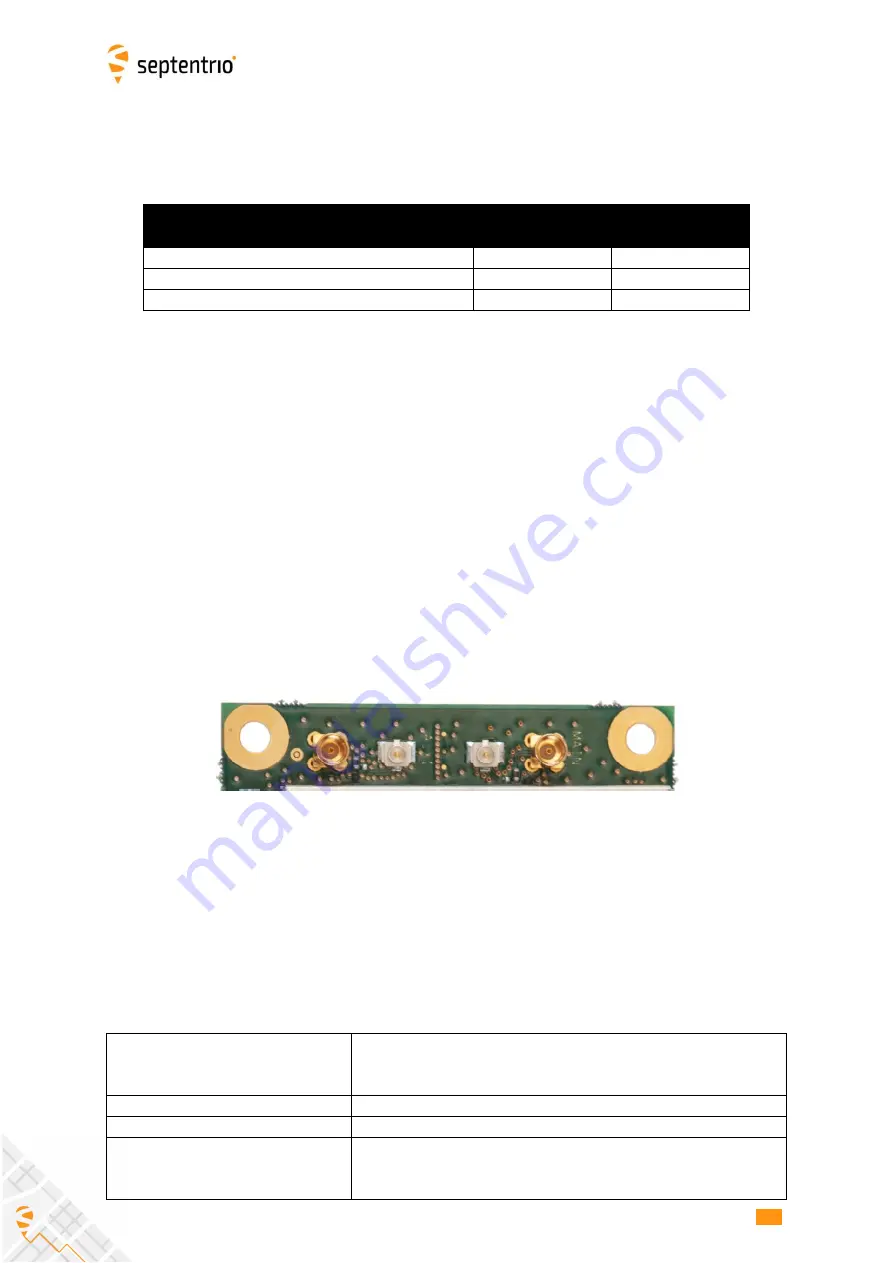
8
8
AsteRx-m3 OEM
8
The following table shows the typical power consumption for selected sets of signals. The
dual antenna configuration corresponds to a receiver where the option to track from the
AUX1 antenna is enabled.
Signals enabled with
setSignalTracking
Power consumption
Dual antenna
Single antenna
GPS L1+L2
1.05 W
0.75 W
GPS L1+L2, GLO L1+L2
1.10 W
0.80 W
All GNSS signals from all GNSS constellations 1.60 W
1.00 W
Enabling the built-in L-Band demodulator with the
setLBandSelectMode
command adds
100 mW.
Enabling wideband interference mitigation with the
setWBIMitigation
command adds
160 mW (dual antenna) or 80mW (single antenna).
Consumption in standby mode:
3 mW
Note that the power consumption in the above table are average values. To account for
peak currents, the minimum power supply drive capability should be 1 Ampere.
2.4
RF Interface
For illustration purposes, the above picture shows both u.FL and MMCX connectors. In
reality, only one type of connector is available depending on the board variant.
The main antenna must be connected to the u.FL or
MMCX connector marked “MAIN” on
the PCB and the auxiliary antenna must be connected to the AUX1 connector.
2.4.1
Electrical Specifications
Antenna supply voltage
3-5.5V DC, set via pin#18 of the 30-pin connector. The same
voltage is applied to both antennas. If pin#18 is not
connected, there is no DC voltage to the antennas.
DC series impedance
2.7 Ohms
Antenna current limit
150 mA per antenna
Antenna net gain range
1
15-50 dB
For optimal performances, the net gain on MAIN and AUX1
must not differ by more than 10dB.
AUX1
MAIN








































